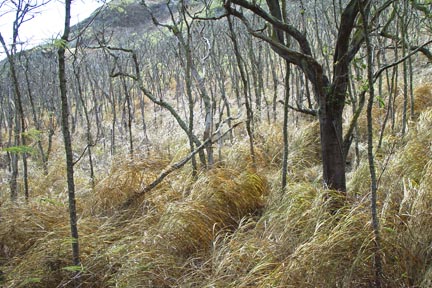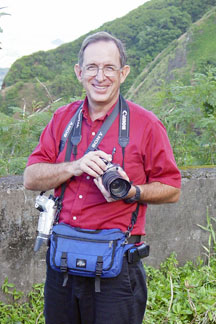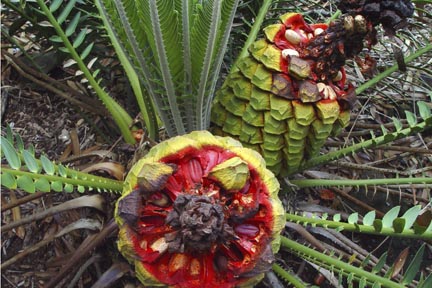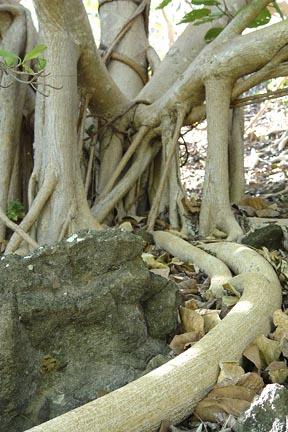
[ HOW TO... ]
James B. Young's Koko Crater shots show a variety of terrain. The forest shot captures interesting lighting.
Take better pictures
Eight tips from a longtime
amateur photographer
James B. Young has been an amateur photographer for more than 40 years. His shots, such as the ones you see on these pages, show his flair for capturing captivating visual images.
As an executive director at Hawaii Public Television in the 1980s and early 1990s, he put his "eye" to good use. In fact, some of his executive producing work for the local PBS affiliate went on to win film and television awards. These days, Young's talents behind the lens are exercised in his spare time, when he's not earning his bread and butter as a lead engineer at Hawaiian Electric Co., with a Ph.D. in engineering.
Young is always ready and waiting for that perfect shot.
Here are Young's tips for budding photographers:
1. Expose yourself to good photography. Read National Geographic or Sports Illustrated or something else where the pictures are outstanding. Go to good movies. Ask yourself why certain images "work" and others do not. (Here's a secret: I use the Star-Bulletin photographers for inspiration. To me, they are the best in Hawaii. Two of my favorites are FL Morris and George Lee. I look at how they handle their subjects and try to imitate their approach.)
2. Use unusual perspectives. Get in closer, get back farther, get up higher, get down lower. Some of the new digital cameras with swivel backs make this easier.
The palm close-up displays lush color and interesting patterns.
3. Decide what you are trying to say with your picture. Include picture elements that will help tell the whole story. Use selective focus and lighting to make your subject stand out.
4. Take lots of pictures. Remember that the 13 choice images in a National Geographic article have been selected from a field of several thousand. Taking lots of pictures was expensive when film was the norm. With digital cameras there is no excuse for holding back. Don't worry about making mistakes. Experiment. Try something you have never done before.
The thistle against the sky caught Young's attention with its interesting patterns.
5. Master your camera. Learn to work it so well that you can move quickly when that once-in-a-lifetime shot presents itself.
6. Crop and fine-tune your photographs using a darkroom or computer program like Photoshop. Many a prize-winning picture was literally "made" during the editing process.
Brilliantly colored dates were shot from a unique perspective...
7. Study art composition. Take a class or read a book. Learn from the great masters. Then feel free to bend the rules to get that unusual picture that expresses your unique viewpoint.
8. Shoot subjects that really excite you. Try to capture images that will convey your excitement to others. If your pictures don't excite you, then they probably won't anyone else. Try again and again until they do.
...as were the roots of a tree. All the shots were taken at Koko Crater, where Young says "is almost like taking a trip somewhere else."
James B. Young has been an amateur photographer since 1960. He got his first camera in 1968 as a Christmas gift from his father.
ABOUT TODAY'S PACKAGE
Magazine fronts are full of cover lines promising the same things every month. You'd think all we care about is how to be rich, thin, unstressed and beautiful.
This week, we attempt to answer life's most perplexing questions, which will free us to pursue more serious thoughts.
Here comes the disclaimer: We do not promise that any of the methods and practices contained within this issue will work universally. They are guidelines. As always, when seeking answers and advice, consult experts who can analyze your particular situation and come up with a custom solution.
Click for online
calendars and events.






